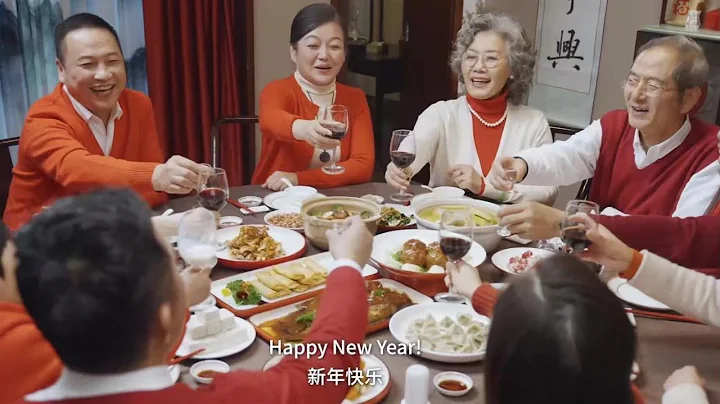Wei Zhongyue belonged to Wanshanli in ancient times and was the residence of the Li family. The name "Fengchi" is not self-proclaimed, it is really a distinguished family. Zhongyue is located in the central and western part of , Duwei Town, bordering Yangban, and is also known as the two largest plain plates in Duwei.
Although Zhongyue is a plain township, there is a "Fengshan" with an altitude of about forty or fifty meters across behind Zhongyue Street. Fengshan is the remnant of Yangban Fengshan. Since the Xianyong Highway ran through it, "Fengshan" has become an isolated mountain, and the intersection is now called "Batou Ridge". In ancient times, there were more than ten double-sided streets in Zhongyue. Its east street was adjacent to Fengshan Mountain, and its west street was behind Songxi (today's Zhongyue River). Historically, Zhongyue Street was an important commercial and trade center in Xixiang. At the beginning of the founding of the People's Republic of China, the office address of the Seventh District (Duwei) Township Office was chosen to be "Chaotian Academy". A heavy rainstorm in the summer of 1951 caused a "Longbang" (mudslide) in Yun Village on Pingshan Mountain. The floods in Zhongyue Song River surged and flooded into Chaotian Academy, forcing the township office to move to the Duwei building built with 76 kilograms of gold. "Ruiyundi" (Dazhang house for overseas Chinese, now called the old commune).
If you have an atlas from the early 1960s, you can easily find the sign with Xianyou Zhongyue in Fujian Province, and it is one of the few three signs in Xianyou in the whole territory. It can be seen that Zhongyue The importance of geographical location.
There are only three places in history called "streets". The first is Wanshanli Tanbian Street, which houses the market; the second is Shengtou Street, although it is located in the northeast corner; and the third is the famous Zhongyue Street. Zhongyue Street is a section of the ancient post roads of Xianyou, Yongchun and Dehua, and is the intersection between Xianyou, Yongchun and Dehua .
Before the Dengying Bridge and Buyun Bridge were built, residents of Xian, Yong, De and the western mountainous areas regarded Zhongyue Street as their first stop for trade. Because Xixiang is crisscrossed with ravines and streams, the Zhongyue Bridge came into being. The year it was built is unknown. According to the county annals: Zheng Hengshu (Ji Fu) rebuilt it in the fifth year of Zhengtong in the Ming Dynasty (1440), and it was originally named Songxi Bridge. The abundant water resources of Yunshui Siheshui, especially under the influence of floods several times a year, caused the Songxi Bridge to be destroyed for a long time.
Human travel begins with a single step, and helpless detours and fording streams test the limits of people's endurance. Xixiang is rich in cane sugar, tobacco leaves, and rice, so this route is indispensable to the city. Not caring about the sufferings of the people and wasting ten years of study, Zheng Ji decided to inherit his father's legacy and advocate for reconstruction. According to the county annals in the 35th year of Qianlong's reign: In the 11th year of Chenghua in the Ming Dynasty (1475), Zheng Ji led the gentry from all over the country to raise funds and start the construction. The bridge was completed the following year (1476). For a considerable period of time, the bridge greatly facilitated the travel of the people.

Today's Dengying Bridge

The two combined streams from Zimao Mountain and Liangshan pass through today's Dengying Bridge

Zheng Jijian climbed onto Yingying Bridge and recorded: "One stream comes from Zimao Mountain and the other stream comes from Pingshan Mountain." This is the current two streams. The real scene of the confluence of Gu (real three Gu water)

This is the real scene of Pingshan water flowing through "Changxi Bridge" and then Yunshui "Zhenwu Bridge"

This is the real scene of Yunshui mountain water finally flowing into Zhongyue River (forming Sihe water) (located 5 meters below Buyun Bridge)
On February 9th, I accidentally discovered a tablet erected in the auspicious month of the Gengzi Year, the 16th year of Chenghua in the Ming Dynasty (1480). I suddenly discovered that this was the first authentic product ever found with the real name and the name of the DPRK. The original inscription on the overpass restores the story of the bridge's construction from the inscription. The six characters "Reconstruction of Chaotian Bridge" are engraved on the forehead of the stele. The date of inscription is Chenghua 16th year Gengzi Jiyue Li, 533 years ago. The inscription was written by Lin Cheng, the imperial censor of Guangdong Province, who was awarded Jinshi, was the general of Gyeonggi Academic Affairs, and was the official of Fengzheng. The inscription details that the predecessor of Chaotian Bridge was Song'an layman (Ji Fu), who took the lead in donating rice for its reconstruction and renamed it "Songxi Bridge". At that time, the bridge had one pier, which was divided into two gates and then collapsed. At this time, Zheng Ji had been home for 16 or 17 years, and there was not much time before he could go north to resume his duties. The villagers really wanted Zheng Ji to take the lead in rebuilding the bridge. Because the old bridge was prone to collapse, another pier was added to the bridge this time, which was sparsely divided into three bays, doubling the capacity. Stones were still used as beams, and a pavilion was placed on the bridge. Lin Cheng, the censor of the county ( Putian ) happened to visit Zheng Ji, and Ji asked Cheng to take notes. Lin Cheng changed the name of the bridge several times, and finally named it "Chaotian Bridge".There are some missing words before October in the inscription. Although it is not clear when the construction started in October, it is said that "the contribution will be made in March of next year's Gengzi". It can be traced back to the Gengzi year, which is the 16th year of Chenghua (1480). In other words, the construction of the bridge was started in October of Jihai (1479) of the previous year, which is obviously wrong with the eleventh year of Chenghua (1475) recorded in the county annals. What's interesting is that there were only 14 people who signed the contract. It may have taken five months and it cost a lot of money. It may not be impossible to appoint these 14 as directors. The so-called board members are not country squires, but they are respectable people, but the money they pay is also extraordinary. For example, Wu Tingrui and Yu Yuxi built the Luming Bridge; Wu Tingrui and Yu Yucheng (half-brothers of Yu Yuxi) built the Chao Tianqiao, and it is known that Yu Yuxi, the Duwei, was a minor official; although his younger brother was not an official, he was also a later official. Isn't this the same as today's bridge repair situation?

Reconstruction of Chaotian Bridge (Ming Dynasty Stele Inscription)
The third construction of Chaotian Bridge solved the problem of people in Yunshui and Damaoshan entering and exiting Xianyi. When Dengying Bridge was not built, although people had to cross the stream, they eventually entered. Everyone in Xianyi must pass through the Chaotian Bridge, which is a must-pass bridge because today's Batou Ridge was not penetrated until the founding of the People's Republic of China. Therefore, apart from the people of Wenxianli, Chaotianqiao, most of the merchants in Xianyou, Yongchun and Dehua looked after it. However, the fate of Chaotian Bridge has been ill-fated so far in history. It was overhauled every ten years during the Jiaqing period of the Qing Dynasty. From the Republic of China to the founding of the People's Republic of China for a period of time, the bridge had no choice but to use thick juniper boards for paving. It was also built and destroyed many times, and it could not escape the floods. In addition to the Sihe River flood peak upstream of the Chaotian Bridge, the reason is that the foundation pier did not adopt the tapered design of the Luming bridge pier and the ship tip and the protection of the slope dam. Today's Chaotian Bridge relies on the assistance of cement raw materials, and a solid hard dam has been built more than a hundred meters away from the bridge. Although there will be no floods for another hundred years, it will be difficult to shake the dam, and it will be even more difficult to shake the Chaotian Bridge.
The author of this article: Yu Hongsen

Chaotianqiao New Look

Xishui











